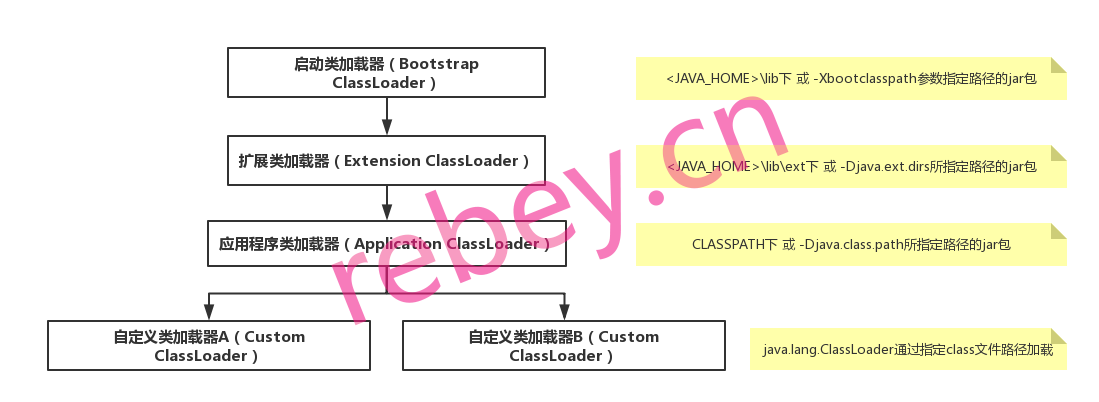* Converts an array of bytes into an instance of class <tt>Class</tt>,
* with an optional <tt>ProtectionDomain</tt>. If the domain is
* <tt>null</tt>, then a default domain will be assigned to the class as
* specified in the documentation for {@link #defineClass(String, byte[],
* int, int)}. Before the class can be used it must be resolved.
*
* <p> The first class defined in a package determines the exact set of
* certificates that all subsequent classes defined in that package must
* contain. The set of certificates for a class is obtained from the
* {@link java.security.CodeSource <tt>CodeSource</tt>} within the
* <tt>ProtectionDomain</tt> of the class. Any classes added to that
* package must contain the same set of certificates or a
* <tt>SecurityException</tt> will be thrown. Note that if
* <tt>name</tt> is <tt>null</tt>, this check is not performed.
* You should always pass in the <a href="#name">binary name</a> of the
* class you are defining as well as the bytes. This ensures that the
* class you are defining is indeed the class you think it is.
*
* <p> The specified <tt>name</tt> cannot begin with "<tt>java.</tt>", since
* all classes in the "<tt>java.*</tt> packages can only be defined by the
* bootstrap class loader. If <tt>name</tt> is not <tt>null</tt>, it
* must be equal to the <a href="#name">binary name</a> of the class
* specified by the byte array "<tt>b</tt>", otherwise a {@link
* NoClassDefFoundError <tt>NoClassDefFoundError</tt>} will be thrown. </p>
*
* @param name
* The expected <a href="#name">binary name</a> of the class, or
* <tt>null</tt> if not known
*
* @param b
* The bytes that make up the class data. The bytes in positions
* <tt>off</tt> through <tt>off+len-1</tt> should have the format
* of a valid class file as defined by
* <cite>The Java™ Virtual Machine Specification</cite>.
*
* @param off
* The start offset in <tt>b</tt> of the class data
*
* @param len
* The length of the class data
*
* @param protectionDomain
* The ProtectionDomain of the class
*
* @return The <tt>Class</tt> object created from the data,
* and optional <tt>ProtectionDomain</tt>.
*
* @throws ClassFormatError
* If the data did not contain a valid class
*
* @throws NoClassDefFoundError
* If <tt>name</tt> is not equal to the <a href="#name">binary
* name</a> of the class specified by <tt>b</tt>
*
* @throws IndexOutOfBoundsException
* If either <tt>off</tt> or <tt>len</tt> is negative, or if
* <tt>off+len</tt> is greater than <tt>b.length</tt>.
*
* @throws SecurityException
* If an attempt is made to add this class to a package that
* contains classes that were signed by a different set of
* certificates than this class, or if <tt>name</tt> begins with
* "<tt>java.</tt>".
*/
protected final Class<?> defineClass(String name, byte[] b, int off, int len,
ProtectionDomain protectionDomain)
throws ClassFormatError
{
protectionDomain = preDefineClass(name, protectionDomain);
String source = defineClassSourceLocation(protectionDomain);
Class<?> c = defineClass1(name, b, off, len, protectionDomain, source);
postDefineClass(c, protectionDomain);
return c;
}


